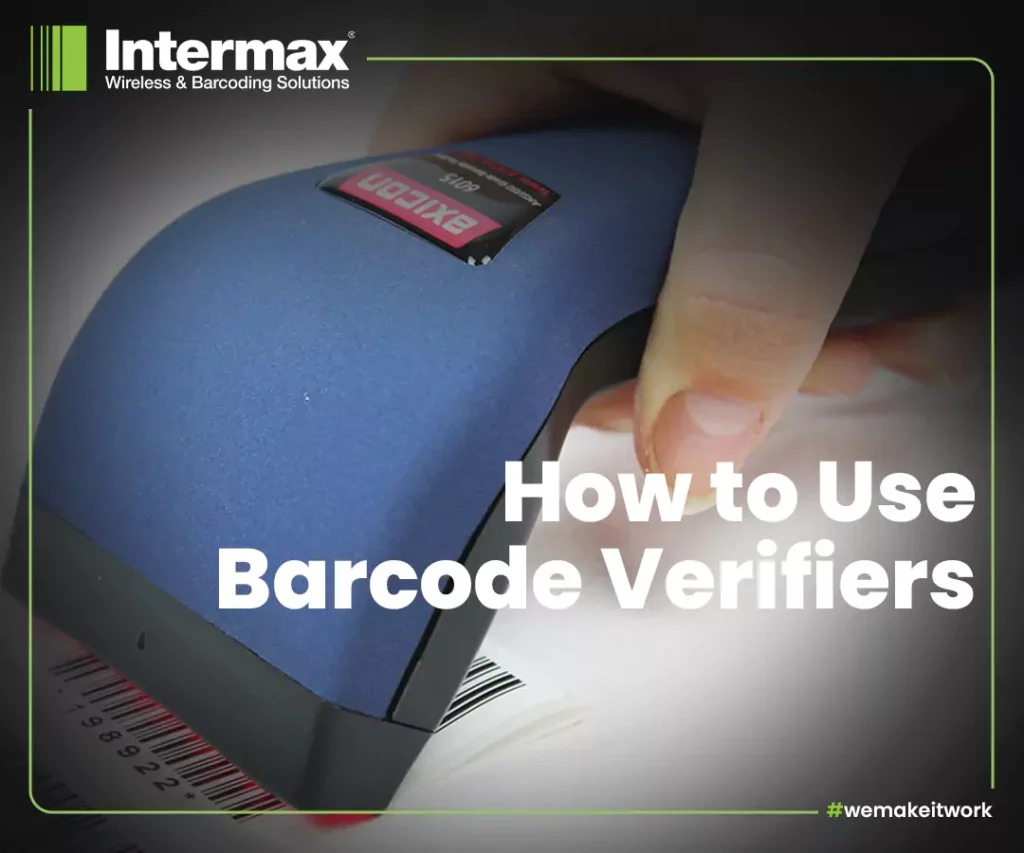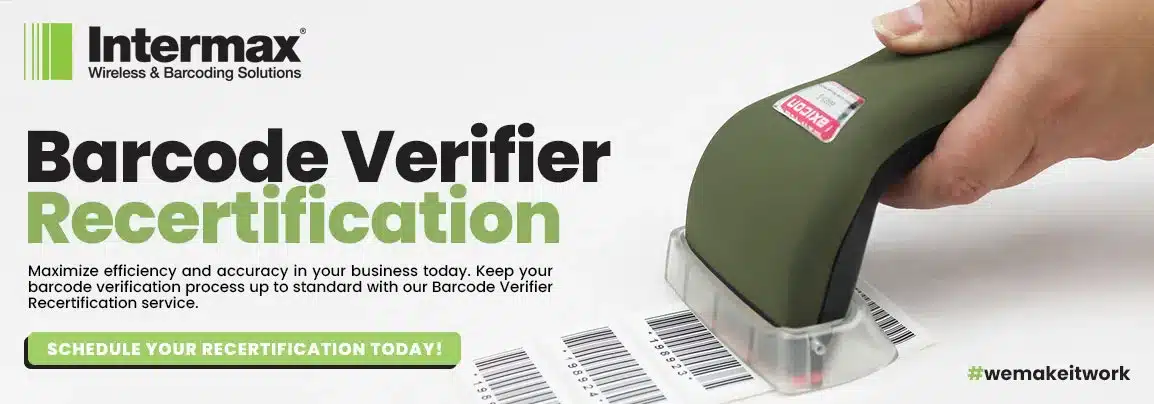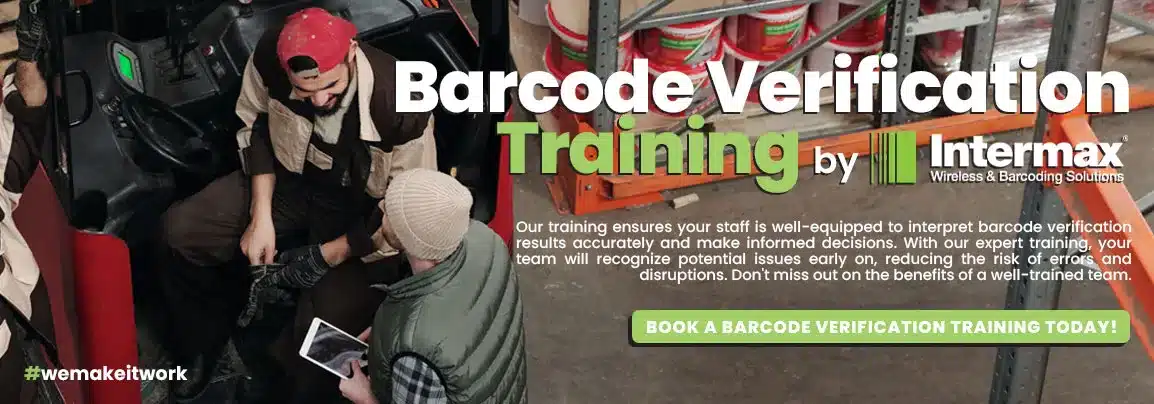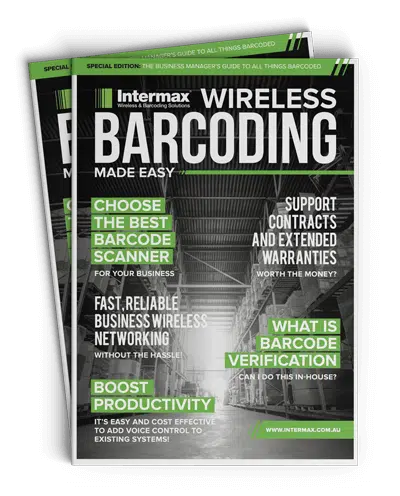
How To Use Barcode Verifiers
Mistaking barcode verifiers for barcode scanners? Let’s clear up that misconception. While both are invaluable tools, they serve distinct purposes in the world of barcoding.
DONT TRUST YOUR BARCODE JUST BECAUSE IT SCANS WITH A READER!
Keep reading to learn more about barcode verifiers and why they are such a necessary part of your industry.
What Is A Barcode Reading Error?
Ever stumbled upon a barcode that just wouldn’t scan? It might be suffering from a barcode reading error.
Main Types of Barcode Errors:
- Poor Image Quality: Sometimes visibly noticeable, but not always. While some errors are obvious to the naked eye, others are more elusive.
- Flawed Data Quality: A barcode that might look good in your eyes, might still have internal data problems.
- Insufficient Quiet Zones: The silent spaces around barcodes, crucial for accurate reading.
- Bar Gain Issues: When bars of the code deviate from standard widths.
- Contrast Problems: Low differentiation between bars and spaces can cause read failures.
But Why Is This Important?
Barcode verifiers compare a barcode quality, data, and structure with international and industry standards. Depending on the state of these qualities, the barcode is given either a passing or failing grade.
- Quality Assurance: Verifiers can highlight discrepancies in barcodes against industry standards.
- Error Rectification: With insights from verifiers, operators can pinpoint defects and optimize the printing process for error-free barcodes.
- Industry Compliance: For businesses, ensuring barcodes pass muster isn’t optional; it’s vital for smooth operations.
How Does A Barcode Verifier Help?
Ever wondered how crucial a barcode verifier is? Dive into the world of barcode assurance and discover the pivotal role these tools play in sustaining business efficiency.
Here’s Why Barcode Verifiers Are Essential:
- Quality Assurance: Avoid manufacturing glitches, unforeseen delays, and production halts that stem from unreadable barcodes.
- Cost-Effective: Boost your ROI by sidestepping costly mistakes and maintaining stringent quality control.
- Insightful Feedback: Use real-time feedback to master the barcode creation process, ensuring every code is clear and readable throughout the supply chain.
- ISO Standards Compliance: Many industries hinge on ISO barcode standards. Verifiers are the gold standard for barcode quality assurance.
- First-Time Right: Ensure each barcode scans perfectly, preventing no-reads or slip-ups, which might lead to hefty penalties.
- Zero Manual Errors: Manually entering barcode data? It’s a recipe for error. Verifiers ensure precision, enhancing customer trust and satisfaction.
If you don’t test your codes with a barcode verifier, their failure to read may require you to input the barcode data manually. This opens up the process to human error. Barcode verifiers make sure none of these mistakes occurs. It keeps the quality control high and improves customer satisfaction.
Why Can’t A Barcode Scanner Do The Same Thing?
Ever thought that a barcode scanner and a barcode verifier serve the same purpose? It’s a common misconception! While both tools interact with barcodes, their functions are vastly different.
Barcode Scanner vs. Barcode Verifier: Know the Difference!
- Reading vs. Evaluating: A scanner captures the data from a barcode. However, just because it can read it, doesn’t mean the barcode meets quality standards. That’s where verifiers step in! a verifier can decode, measure, and check the format of a barcode, a scanner can only read them.
- Quality Assessment: Scanners don’t gauge barcode quality. On the flip side, verifiers not only read but identify defects and ensure your barcodes adhere to international and industry benchmarks.
So, before you make the decision, understand what you’re looking for: reading capability or quality assurance? For businesses eyeing accuracy and consistency, it’s clear – the barcode verifier is your go-to tool!
How To Choose A Barcode Verifier?
Selecting a barcode verifier isn’t just a matter of “one-size-fits-all.”
There are many components that affect how a barcode verifier reads the codes. Barcodes come in all kinds of different shapes and sizes, so you have to pick a verifier that has the right lighting, optics, field of view, shape, and substrate for your codes.
If you don’t know what you’re looking for, this can be difficult to do.
For information on all things related to Barcode Verification please feel free to check out our special Barcode Verification Website – HERE
Let’s take a look at four questions that can help you find the best barcode verifier for your industry needs.
How To Use Barcode Verifiers?
Barcode verifiers are used in a similar way to barcode scanners. They are easy to use, but they give you a lot more information. They provide strong quality control and can help you avoid chargebacks from other retailers.
- Ease of Use: Barcode verifiers operate similarly to scanners, but pack a punch with added features.
- Rich Data: While a scanner reads, a verifier informs! Dive deep into the quality, integrity, and potential issues of each barcode.
- Quality Control: Navigate the industry with confidence. With verifiers, maintain a high standard, reduce errors, and dodge those costly chargebacks from retailers.
Yet to Invest in a Verifier? Don’t get left behind! Make it your priority to incorporate this powerful tool for unparalleled quality assurance.
? Dive In: Check out our top-of-the-line ISO Verifiers to find the perfect fit for your needs.
Thinking of an Upgrade? Discover a wealth of options and insights at our dedicated Barcode Verification Website.





